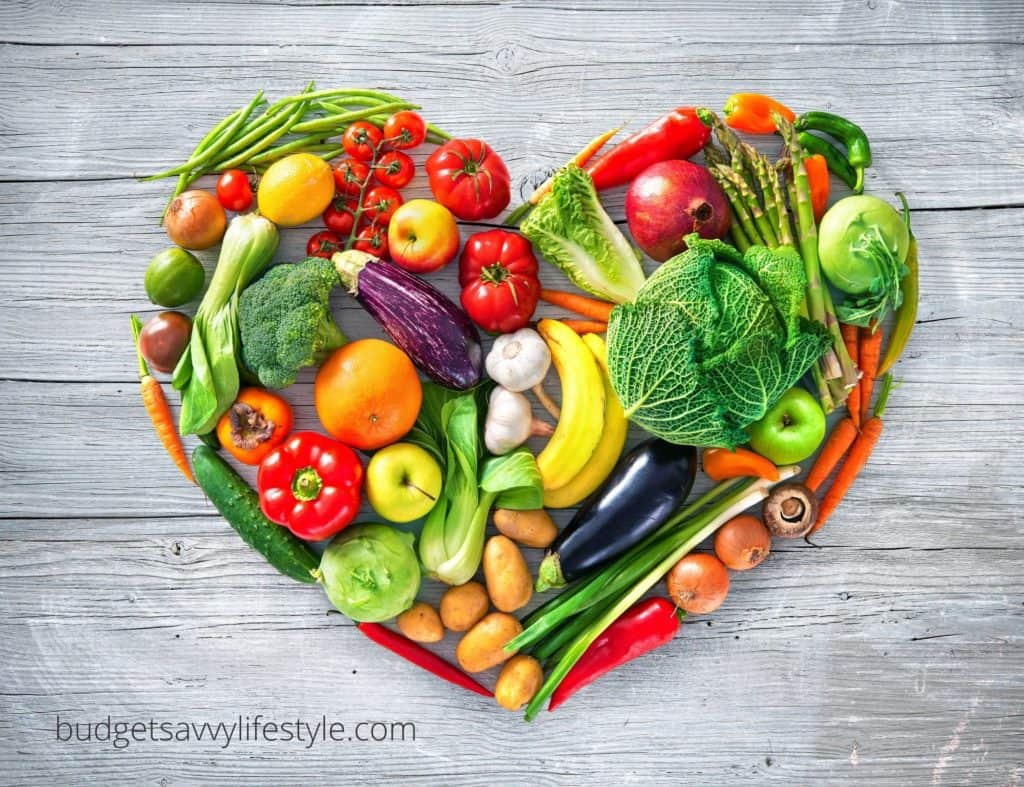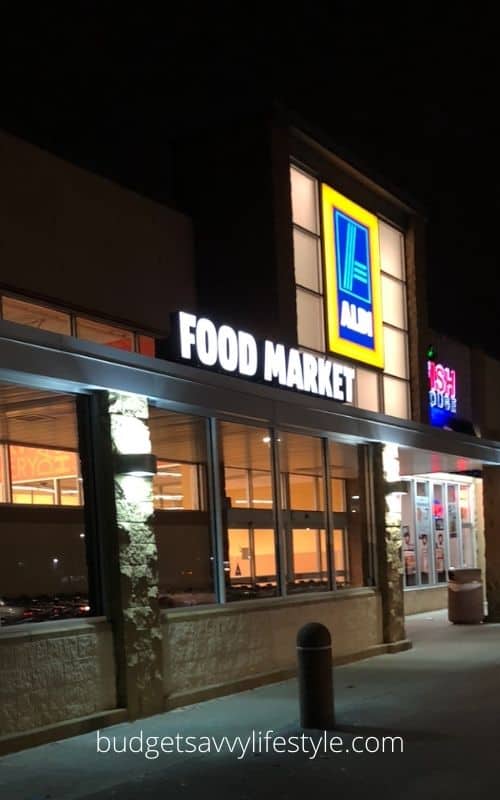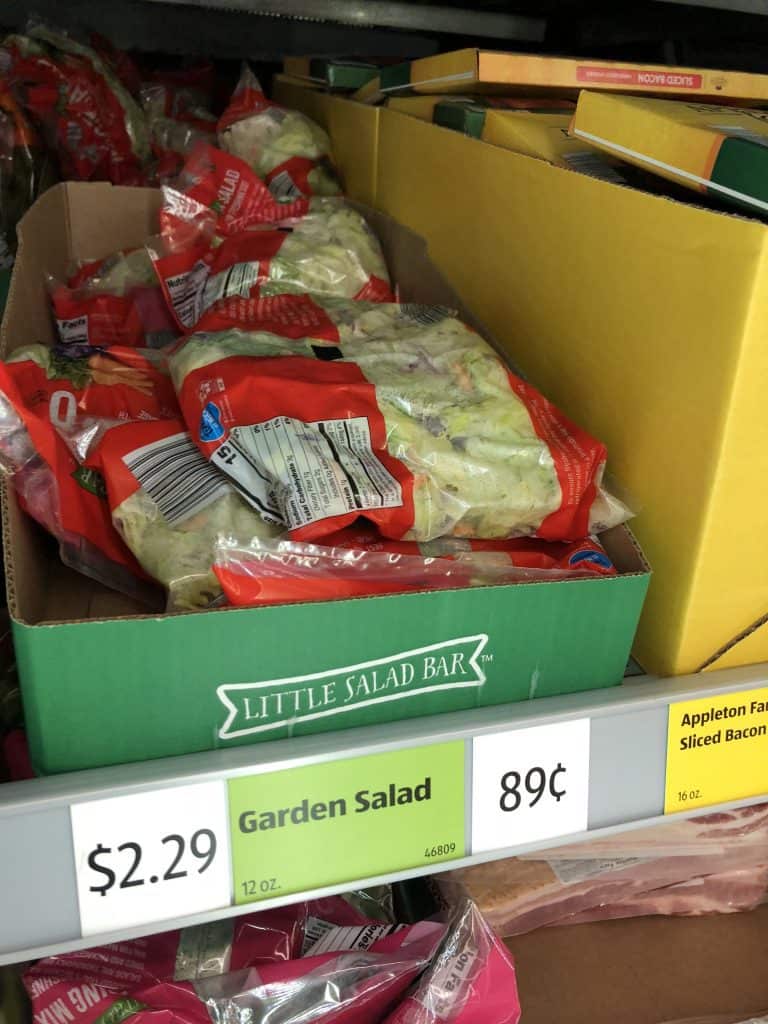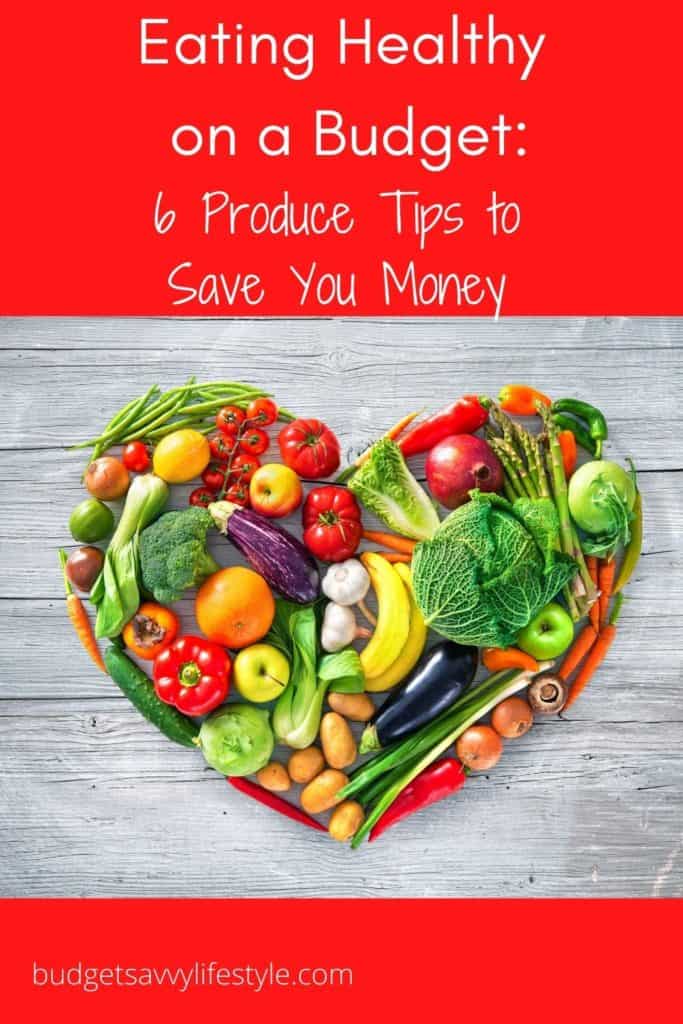
One thing that can certainly make or break your grocery budget is purchasing produce.
It’s a common complaint of many that eating healthy can cost too much. This doesn’t have to be the case though. With a few simple tips, I think you will find that there is a lot of ways to save on fruits and vegetables and stick to your budget while doing it!
#1 - Shop at Several Stores

If your time allows, I highly recommend shopping two or three grocery stores at least. This allows you to take advantage of the produce deals in their weekly ads and offers you a larger variety of options at each.
I typically shop every week at Aldi, Kroger, and Fresh Thyme plus Randazzos, which is my neighborhood produce market (we’ll get more into that in a bit!)
I check online when the ads post for the week and take note of the produce deals they have so that I can add the ones we can use to my weekly grocery list.
Pay especially close attention to the produce that is featured on the front page of your favorite grocery stores’s ads. These will be the loss leaders and are going to be the best produce deals at the store that week.
I make time to hit several stores a week by planning an early Sunday morning errand run, when I can, or planning to hit one or two stores at a time when I am out throughout the week either heading home from work or appointments.
#2 - Look for a Market that Specializes in Produce near Your Home
Two of our three past homes have had a produce market within a mile or two of our home. I can’t tell you what a godsend this has been!
Since they mainly sell produce (and a lot of it!) they can typically get much better rates on it that grocery stores. The one that is near my current house also sells by the case to local restaurants so they have really amazing rates! It is not usual for me to walk out of there with 4-5 grocery bags full of produce for $15-$20.
To find one near you, try typing one of the following terms into the search engine: produce market, vegetable market, or fruit market.
#3 - Hit Farmer’s Markets in the Warmer Months
This is a great way to get good deals on fresh and local produce. It also helps you support small and local businesses. Got to love that! Plus, farmer’s markets are a treasure hunt because you never know what you might find!
You can use this website to help you locate farmer’s markets near you.
#4 - Shop with the Seasons
This typically means eating a lot of apples, potatoes, squash, etc in the fall: berries, melons, and stone fruits in the summer months: and citrus in the winter.
The prices are always better when something is in season and plentiful. I know I can usually find three pound bags of apples in the fall for $1 so we eat more of them. In the summer, scoring berries for $1 a carton and huge watermelons for $3 is commonplace so we consume them a lot then.
The other advantage of shopping what is in season is that it always tastes better than. Berries and watermelon always taste their best in summer and winter citrus always seems juicer to me than the stuff I buy in the summer.
#5 - When you can’t find deals, stick to the tried and true basics!

Get creative to save on produce. Buy tried and true favorites that are always affordable alongside with what ever is on sale and in season!
Apples, bananas, carrots, and citrus such as clementines are usually affordable options year round. So is bagged garden salad which often sells at Aldi for .89 a bag.
You can also get frozen bags of vegetables such as corn, green beans, and broccoli for $1 or less a bag. This is a great way to add more produce to your meals not only inexpensively, but also easily. This bagged veggies often come in steamer bags that you can pop right into the microwave.
Potatoes and sweet potatoes are also often year round bargains when it comes to produce consumption. You can bake them and eat them whole or dice them up and add them to skillets or foil packet meals. Of course, you can never go wrong with mashing them either!
#6 - Grab Marked Down Produce When You Can
When hitting the grocery store, always be on the lookout for great markdowns in the produce section.
Kroger, for instance, will bag up produce that is about to go bad and sell the bags for $0.99. They also markdown ripe bananas and will place markdown price stickers on bagged items like bagged salads and sugar peas that are near or at their expire by dates.
Just make sure that you incorporate these items into your meal plan as soon as possible!

What are your favorite ways to eat healthy on a budget?